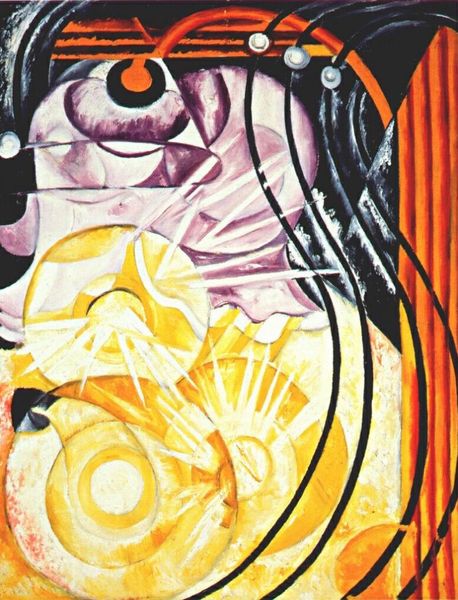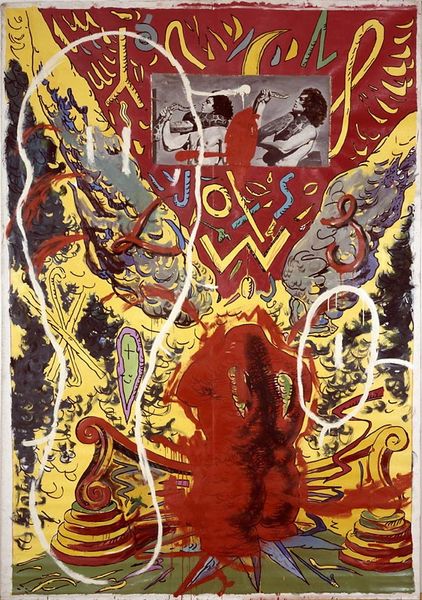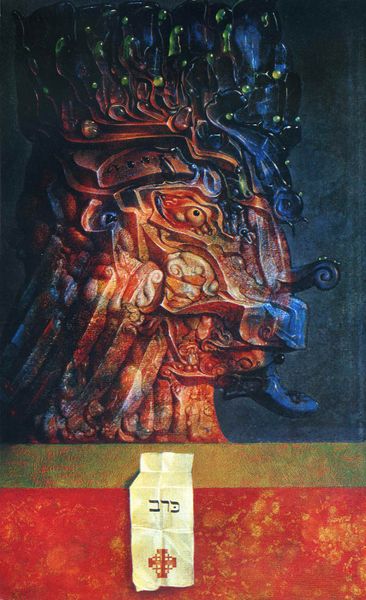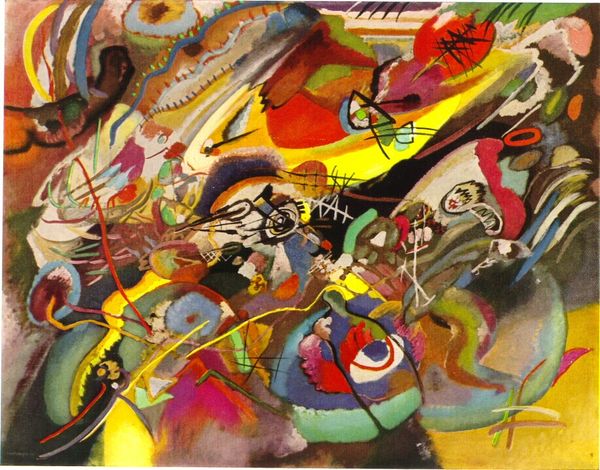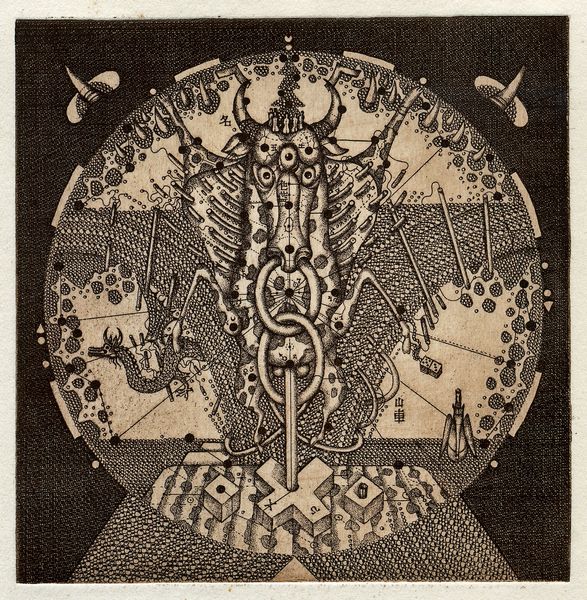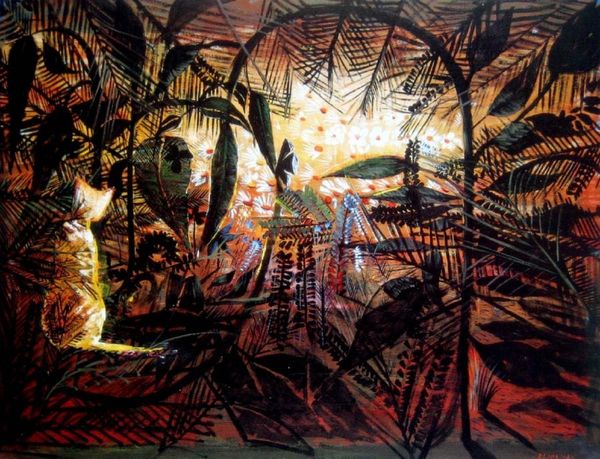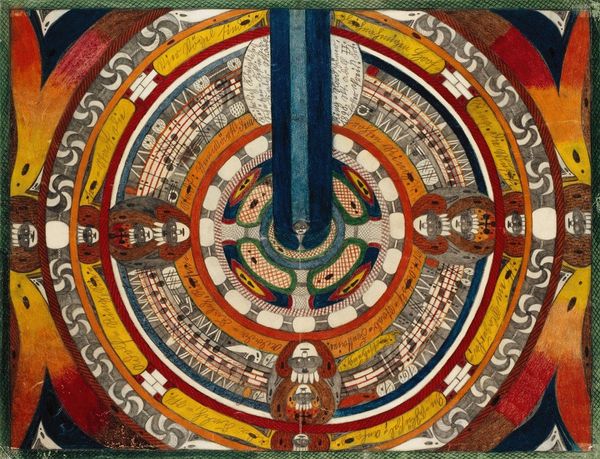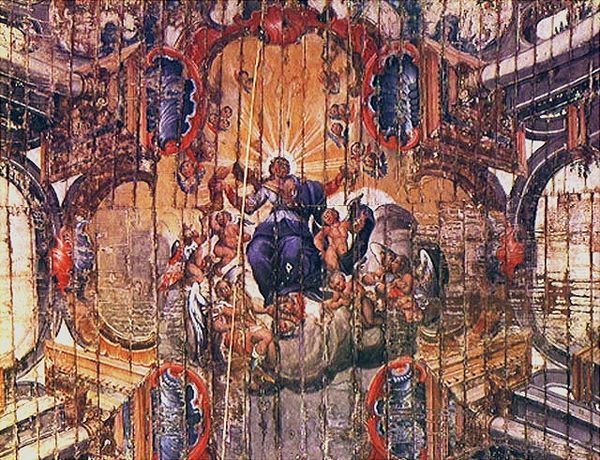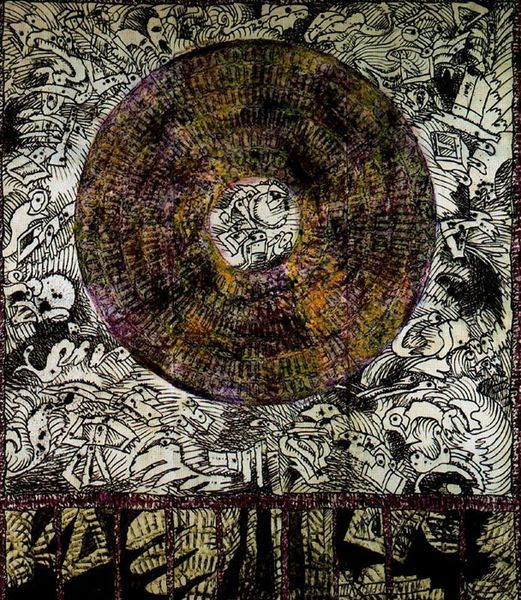
Copyright: Public domain
Curator: What strikes me immediately about this section of the ceiling mural is its warmth – almost honeyed tones – and that gentle flurry of angels at the base. It’s joyous. Editor: Precisely! The specific section we're observing is a detail from “The Coronation of the Virgin by the Most Holy Trinity,” created by Mestre Ataíde around 1811. We see God the Father and Christ crowning the Virgin Mary amidst billowing clouds and cherubic attendants. Considering it's oil paint on a wooden surface, likely applied panel by panel, there's a clear mediation through labor involved in its making, transforming readily accessible resources into an allegorical visual. Curator: Absolutely. And that materiality… those visible wood panels impart such character. The imperfections in the wood grain dance with the ethereal scene painted above. There’s something intensely human and grounded about this rendering of a divine moment. Editor: Indeed, the tension is compelling. Baroque styles were typically vehicles for the elite and were eventually appropriated in colonial Brazil with often less expensive materials. Think of the pigments alone—imported versus locally sourced. Consider also that colonial artists didn't have the same formal artistic training as their European counterparts. The work and conditions inherent to the region absolutely impacted the final output, from a logistical point of view as well as influencing aesthetic outcomes, right? Curator: That’s a brilliant way to phrase it! I mean, I look at the Virgin Mary's serene expression as she's crowned, and I see resilience in the face of uncertainty and turmoil. Perhaps that very resourcefulness echoes through her representation. She’s the epitome of adaptability. Editor: And while seemingly classical, Baroque art and architecture had more success and widespread adoption because it served to deliver propagandistic goals to the people in this place and time. What this artistic moment expresses is not merely decoration but power. Curator: Ultimately, seeing this mural underscores for me how faith and artistry intertwine and how beauty can be found in humble origins. Editor: And for me, how art exists always within complex relationships of labor and value, echoing material constraints and their role in shaping aesthetic styles.
Comments
No comments
Be the first to comment and join the conversation on the ultimate creative platform.



